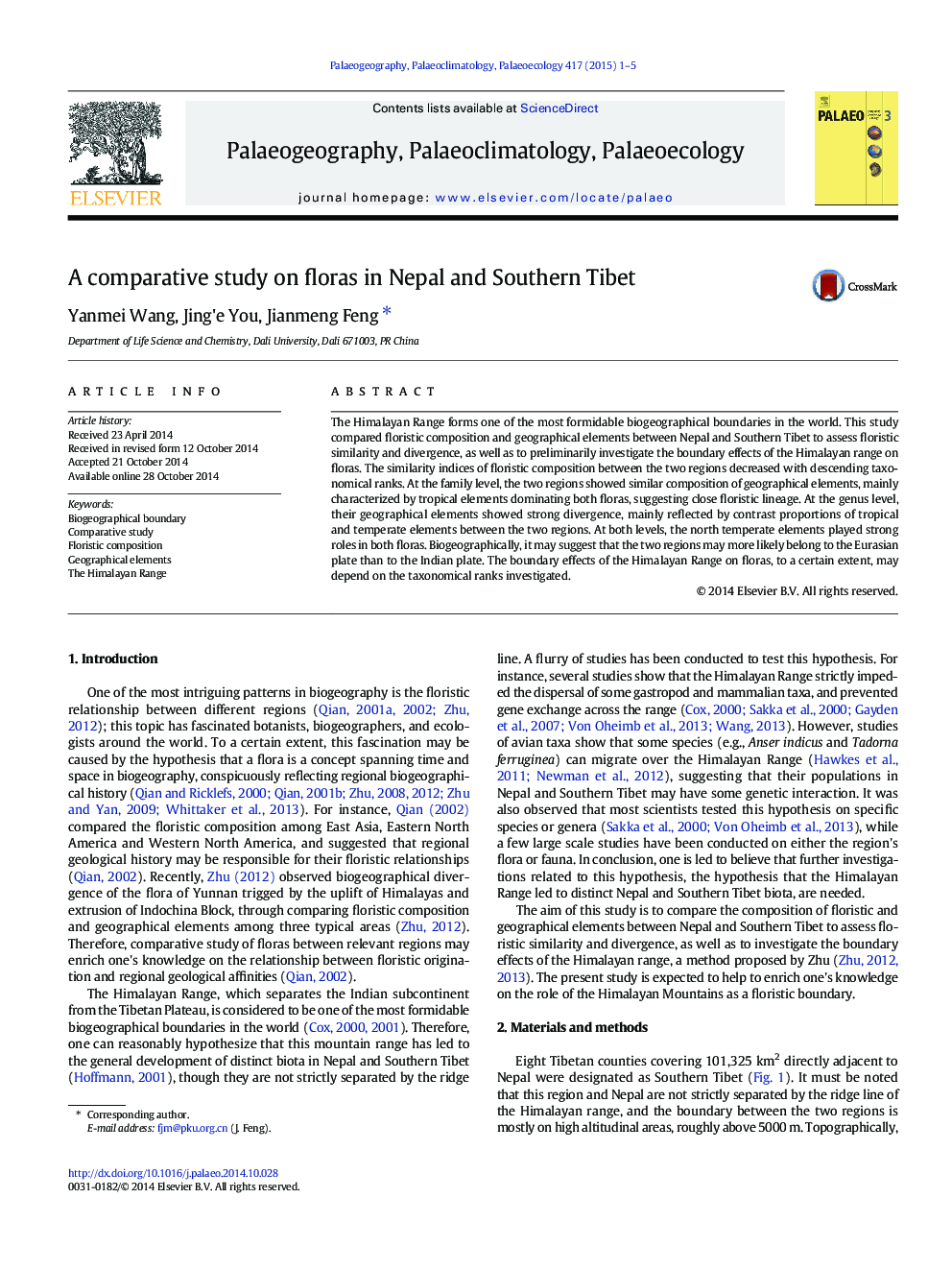| Article ID | Journal | Published Year | Pages | File Type |
|---|---|---|---|---|
| 6349835 | Palaeogeography, Palaeoclimatology, Palaeoecology | 2015 | 5 Pages |
Abstract
The Himalayan Range forms one of the most formidable biogeographical boundaries in the world. This study compared floristic composition and geographical elements between Nepal and Southern Tibet to assess floristic similarity and divergence, as well as to preliminarily investigate the boundary effects of the Himalayan range on floras. The similarity indices of floristic composition between the two regions decreased with descending taxonomical ranks. At the family level, the two regions showed similar composition of geographical elements, mainly characterized by tropical elements dominating both floras, suggesting close floristic lineage. At the genus level, their geographical elements showed strong divergence, mainly reflected by contrast proportions of tropical and temperate elements between the two regions. At both levels, the north temperate elements played strong roles in both floras. Biogeographically, it may suggest that the two regions may more likely belong to the Eurasian plate than to the Indian plate. The boundary effects of the Himalayan Range on floras, to a certain extent, may depend on the taxonomical ranks investigated.
Related Topics
Physical Sciences and Engineering
Earth and Planetary Sciences
Earth-Surface Processes
Authors
Yanmei Wang, Jing'e You, Jianmeng Feng,
